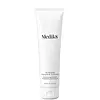What's inside
What's inside
 Key Ingredients
Key Ingredients

 Benefits
Benefits

 Concerns
Concerns

 Ingredients Side-by-side
Ingredients Side-by-side

Water
Skin ConditioningSodium C14-16 Olefin Sulfonate
CleansingSodium Cocoamphoacetate
CleansingCocamidopropyl Hydroxysultaine
CleansingGlycerin
HumectantMandelic Acid
AntimicrobialSalicylic Acid
MaskingCitrus Aurantium Dulcis Peel Oil
MaskingCitric Acid
BufferingCitrus Aurantium Dulcis Fruit Extract
MaskingSodium Hydroxide
BufferingRubus Idaeus Fruit Extract
AstringentYucca Schidigera Root Extract
Skin ConditioningLactic Acid
BufferingPhenoxyethanol
PreservativeCitrus Grandis Peel Oil
MaskingMaltodextrin
AbsorbentDisodium EDTA
Garcinia Mangostana Peel Extract
Skin ConditioningEthylhexylglycerin
Skin ConditioningCitrus Aurantifolia Oil
CleansingCitrus Aurantium Bergamia Fruit Oil
MaskingCitrus Aurantium Amara Peel Oil
Skin ConditioningLimonene
PerfumingLinalool
PerfumingWater, Sodium C14-16 Olefin Sulfonate, Sodium Cocoamphoacetate, Cocamidopropyl Hydroxysultaine, Glycerin, Mandelic Acid, Salicylic Acid, Citrus Aurantium Dulcis Peel Oil, Citric Acid, Citrus Aurantium Dulcis Fruit Extract, Sodium Hydroxide, Rubus Idaeus Fruit Extract, Yucca Schidigera Root Extract, Lactic Acid, Phenoxyethanol, Citrus Grandis Peel Oil, Maltodextrin, Disodium EDTA, Garcinia Mangostana Peel Extract, Ethylhexylglycerin, Citrus Aurantifolia Oil, Citrus Aurantium Bergamia Fruit Oil, Citrus Aurantium Amara Peel Oil, Limonene, Linalool
Water
Skin ConditioningSodium Lauroyl Sarcosinate
CleansingGlycerin
HumectantCocamidopropyl Betaine
CleansingAcrylates Copolymer
Polysorbate 20
EmulsifyingCoco-Glucoside
CleansingGlycol Distearate
EmollientGlyceryl Oleate
EmollientSodium Lactate
BufferingDicaprylyl Ether
EmollientPhenoxyethanol
PreservativeLauryl Alcohol
EmollientParfum
MaskingSodium Chloride
MaskingOrbignya Oleifera Seed Oil
EmollientXanthan Gum
EmulsifyingSodium Hydroxide
BufferingCaprylyl Glycol
EmollientCitric Acid
BufferingPropylene Glycol
HumectantChlorphenesin
AntimicrobialGlyceryl Stearate
EmollientGalactoarabinan
Papain
Skin ConditioningDisodium EDTA
Behenyl Alcohol
EmollientButyrospermum Parkii Butter
Skin ConditioningBenzoic Acid
MaskingMoringa Oleifera Seed Extract
Skin ConditioningHydrogenated Castor Oil
EmollientDisodium Phosphate
BufferingStearyl Alcohol
EmollientProtease
ExfoliatingSubtilisin
Skin ConditioningTocopheryl Acetate
AntioxidantHydrogenated Palm Glycerides Citrate
EmollientTocopherol
AntioxidantPoria Cocos Extract
Skin ConditioningFrog Fat Extract
HumectantWater, Sodium Lauroyl Sarcosinate, Glycerin, Cocamidopropyl Betaine, Acrylates Copolymer, Polysorbate 20, Coco-Glucoside, Glycol Distearate, Glyceryl Oleate, Sodium Lactate, Dicaprylyl Ether, Phenoxyethanol, Lauryl Alcohol, Parfum, Sodium Chloride, Orbignya Oleifera Seed Oil, Xanthan Gum, Sodium Hydroxide, Caprylyl Glycol, Citric Acid, Propylene Glycol, Chlorphenesin, Glyceryl Stearate, Galactoarabinan, Papain, Disodium EDTA, Behenyl Alcohol, Butyrospermum Parkii Butter, Benzoic Acid, Moringa Oleifera Seed Extract, Hydrogenated Castor Oil, Disodium Phosphate, Stearyl Alcohol, Protease, Subtilisin, Tocopheryl Acetate, Hydrogenated Palm Glycerides Citrate, Tocopherol, Poria Cocos Extract, Frog Fat Extract
 Reviews
Reviews

Ingredients Explained
These ingredients are found in both products.
Ingredients higher up in an ingredient list are typically present in a larger amount.
Citric Acid is an alpha hydroxy acid (AHA) naturally found in citrus fruits like oranges, lemons, and limes.
Like other AHAs, citric acid can exfoliate skin by breaking down the bonds that hold dead skin cells together. This helps reveal smoother and brighter skin underneath.
However, this exfoliating effect only happens at high concentrations (20%) which can be hard to find in cosmetic products.
Due to this, citric acid is usually included in small amounts as a pH adjuster. This helps keep products slightly more acidic and compatible with skin's natural pH.
In skincare formulas, citric acid can:
While it can provide some skin benefits, research shows lactic acid and glycolic acid are generally more effective and less irritating exfoliants.
Most citric acid used in skincare today is made by fermenting sugars (usually from molasses). This synthetic version is identical to the natural citrus form but easier to stabilize and use in formulations.
Read more about some other popular AHA's here:
Learn more about Citric AcidDisodium EDTA plays a role in making products more stable by aiding other preservatives.
It is a chelating agent, meaning it neutralizes metal ions that may be found in a product.
Disodium EDTA is a salt of edetic acid and is found to be safe in cosmetic ingredients.
Learn more about Disodium EDTAGlycerin is already naturally found in your skin. It helps moisturize and protect your skin.
A study from 2016 found glycerin to be more effective as a humectant than AHAs and hyaluronic acid.
As a humectant, it helps the skin stay hydrated by pulling moisture to your skin. The low molecular weight of glycerin allows it to pull moisture into the deeper layers of your skin.
Hydrated skin improves your skin barrier; Your skin barrier helps protect against irritants and bacteria.
Glycerin has also been found to have antimicrobial and antiviral properties. Due to these properties, glycerin is often used in wound and burn treatments.
In cosmetics, glycerin is usually derived from plants such as soybean or palm. However, it can also be sourced from animals, such as tallow or animal fat.
This ingredient is organic, colorless, odorless, and non-toxic.
Glycerin is the name for this ingredient in American English. British English uses Glycerol/Glycerine.
Learn more about GlycerinPhenoxyethanol is a preservative that has germicide, antimicrobial, and aromatic properties. Studies show that phenoxyethanol can prevent microbial growth. By itself, it has a scent that is similar to that of a rose.
It's often used in formulations along with Caprylyl Glycol to preserve the shelf life of products.
Sodium Hydroxide is also known as lye or caustic soda. It is used to adjust the pH of products; many ingredients require a specific pH to be effective.
In small amounts, sodium hydroxide is considered safe to use. However, large amounts may cause chemical burns due to its high alkaline.
Your skin has a natural pH and acid mantle. This acid mantle helps prevent harmful bacteria from breaking through. The acid mantle also helps keep your skin hydrated.
"Alkaline" refers to a high pH level. A low pH level would be considered acidic.
Learn more about Sodium HydroxideWater. It's the most common cosmetic ingredient of all. You'll usually see it at the top of ingredient lists, meaning that it makes up the largest part of the product.
So why is it so popular? Water most often acts as a solvent - this means that it helps dissolve other ingredients into the formulation.
You'll also recognize water as that liquid we all need to stay alive. If you see this, drink a glass of water. Stay hydrated!
Learn more about Water